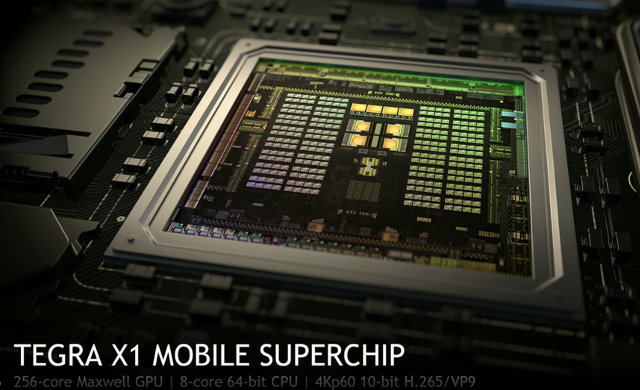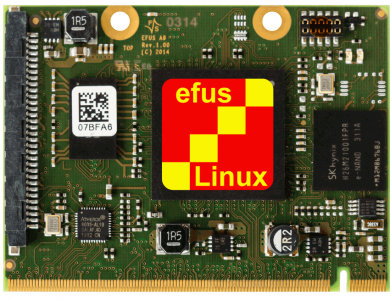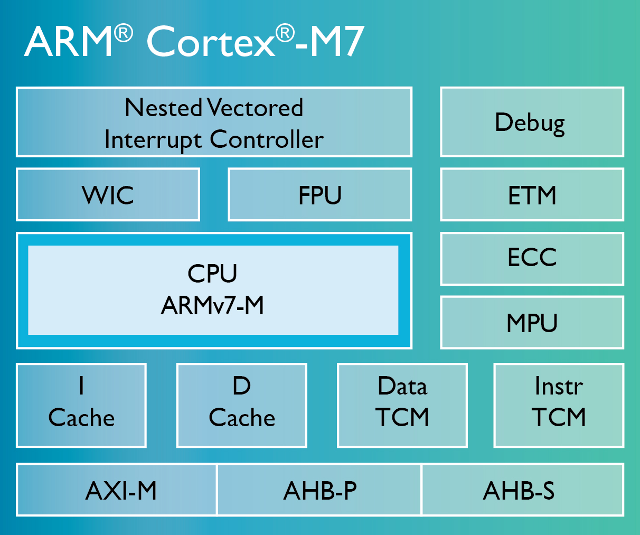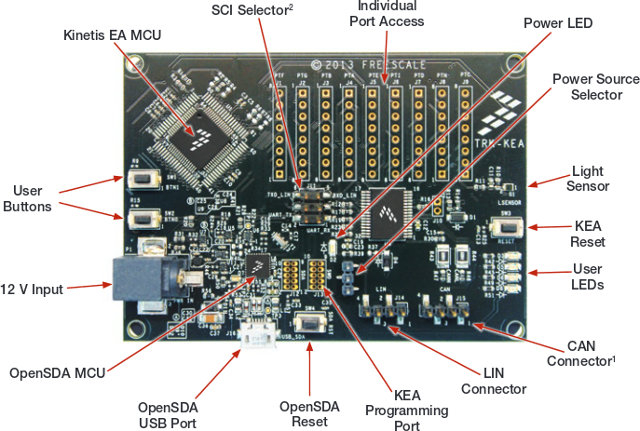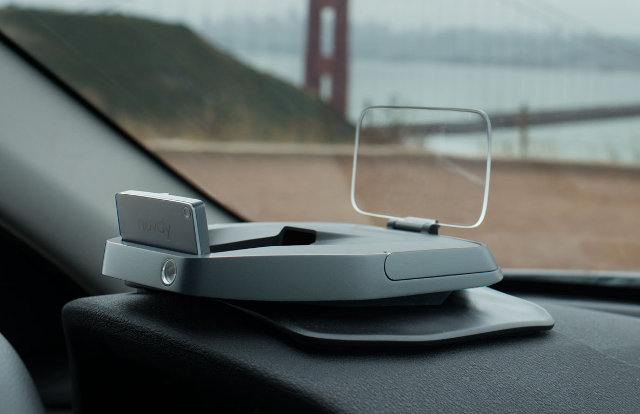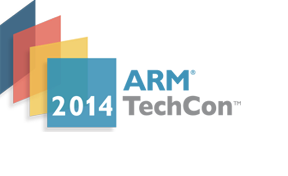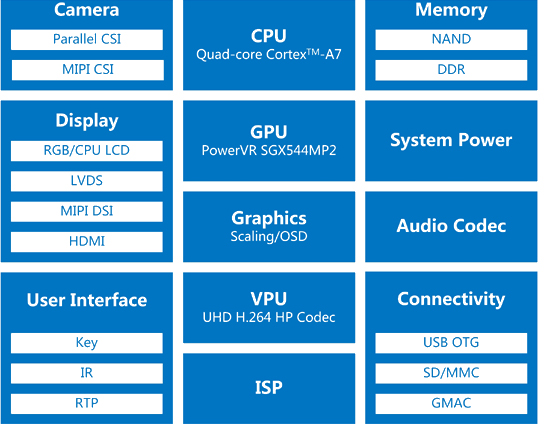CES 2015 has started, and the first company to present their innovations is Nvidia. Last year their introduced Tegra K1, the first mobile processor with a desktop GPU with support for OpenGL. They’ve now raised the bar with Tegra X1, an octa-core 64-bit ARM processor with a 256-core Maxwell GPU delivering 1.5x to 2x the performance of Tegra K1, and supporting 4K60 video playaback with H.265 and VP9 codecs. Some geekbench benchmark comparing X1, K1, and Apple A8x. Nvidia CEO also claiemd Tegra X1 is the first mobie SoC delivering over 1 Teraflops, something that was achieved around year 2,000 with 20,000 Pentium pro processor consuming 1 millions Watts, while X1 SoC only consumes about 10 Watts. Power efficiency is said to have improved too, as Maxwell GPU is said to delivers more performance with similar power efficiency. They also introduced Drive CX mini computer for automotive application featuring Tegra […]
F&S Elektronik Systeme Introduces eFus A9 Industrial Computer Modules Powered by Freescale i.MX6 SoC
F&S Elektronik Systeme, a German embedded systems company, has announced their efus A9 Computers-on-Module (CoM) based on Freescale i.MX6, are now in mass production. The CPU comes in two variants A9V2 for i.MX6 Solo, and A9V3 with i.MX6 DualLite, both of which are certified for automotive and industrial applications, and support commercial, extended, and industrial temperature ranges. eFuse A9 computer-on-module specifications: SoC – CPU Freescale i.MX6 Solo (eFus A9V2) or DualLite (eFus A9V3) @ up to 1.2 GHz + Vivante 2D and 3D GPUs System Memory – 512MB (Up to 1GB RAM) Storage – 256 MB NAND flash (Up to 1GB), 2 GB eMMC (eFus A9V3 only. up to 32GB), optional SPI NOR, optional I2C EEPROM Display I/F – 18-bit RGB, 2x 24-bit LVDS, and DVI Other interfaces available via 230 pins MXM-2 edge connector: 2x SD card I/F 1x Gigabit Ethernet 1x USB Host, 1x USB Device 2x CAN […]
ARM Introduces Cortex-M7 MCU Core for IoT, Wearables, Industrial and Automotive Applications
ARM has just announced Cortex-M7 processor based on ARMv7-M architecture, with double the compute and digital signal processing (DSP) capability of ARM Cortex M4. The latest ARM MCU core targets IoT and wearables applications for the automotive, industrial, and consumer markets including motor control, industrial / home / factory automation, advanced audio, image processing, connected vehicle applications, and so on. Cortex-M7 comes with enhanced DSP instructions, a better FPU (FPv5 with single and double precision support), and tight coupled memory compared to Cortex-M4, according to an Anandtech article. ARM Cortex-M7 also achieves 5 CoreMark/MHz against 3.41 CoreMark/MHz for Cortex M4, and up to 3.23 DMIPS/MHz against up to 1.95 DMIPS/MHz. ARM Cortex-M7 features listed in the press release: Six stage, superscalar pipeline delivering 2000 Coremarks at 400MHz in a 40LP process. AXI interconnect (supports 64-bit transfer) and fully integrated optional caches for instruction and data allowing efficient access to large […]
Freescale To Give Away StarterTRAK Development Boards for Automotive Applications
Freescale StarterTRAK development boards are based on the company’s Kinetis EA Cortex M0+ MUCs or Qorivva 32-bit MCU targeting automotive applications with support a wide temperature range (–40° to +125°C) and interfaces such as LIN (Local Interconnect Network) and CAN. These development boards can be used for body and security, powertrain, and safety & chassis applications. Freescale has decided to giveaway 60 StarterTRACK development board to random winners, so if you are knowledgeable in this field it could be an opportunity to try the platform. There will be 5 different kits given away, all based on Kinetis MCU: TRK‐KEA8, TRK‐KEA64, TRK‐KEA128, KEA128LEDLIGHTRD and KEA128BLDCRD. Let’s have a closer look at TRK-KEA128 development board. Key features and specifications of TRK-KEA128 board: MCU – Kinetis KEA128 ARM Cortex M0+ MCU @ 48MHz with 16KB RAM and 128KB flash in a 80 LQFP package On-board openSDA debugging and programming circuit using the PK20DX128 MCU […]
Navdy is an Android Head Up Display for your Car Controlled by Voice and Gestures
Following up on yesterday’s Android rear view mirrors (ARVM), where I and others mentioned safety of such devices in comments, it has been brought to my attention that there’s a possibly safer alternative with Navdy, a 5.1″ Head-Up Display (HUD) running Android 4.4, that’s placed right in front of your eyes on the top of the dashboard, and coming with both common and different features compared to ARVM. Navdy’s preliminary specifications: Processor – Unnamed dual core processor System Memory – N/A Storage – N/A Display – 5.1″ wide transparent Head-Up Display (HUD) with high quality projector Camera – IR camera for touchless gesture control Connectivity – WiFi (802.11 b/g/n), Bluetooth 4.0/LE Sensors – Accelerometer, e-compass, ambient light sensor Audio – Via Bluetooth or 3.5mm minijack mini-USB port, Internal speaker and microphone with noise canceling DSP Data / Power interface – OBD-II power and data connection to car computer, with optional […]
Android Rear View Mirrors Feature Dual Cameras for DVR Function, GPS, Bluetooth, and More
I first heard about Android rear view mirrors back in 2012 with a solution designed by Huawei running Android 2.3. But this morning, DealExtreme listed three Android rear view mirrors, with model names like EL-H100, EL-H200, and EL-H800 selling between $120 to $216 depending on the features. The mirrors feature 4.3″ to 5″ displays, and all come with dual camera support, run Android 4.0, and seem powered by AllWinner A10 or A13 ARM Cortex A8 processor, with the most expensive (EL-H800) also supporting Bluetooth and GPS. One model also support IR night vision (EL-H100). Features and specifications for EL-H800 model are listed as follows: SoC – AllWinner A13 ARM Cortex A8 @ 1.2GHz with Mali-400 GPU System Memory – 512MB DDR3 Storage – 8GB flash and micro SD slot up to 32GB Display – 5″ TFT Touch Screen, 800×480 resolution Connectivity – Wi-Fi and Bluetooth earphone support, FM radio Video […]
ARM TechCon 2014 Schedule – 64-Bit, IoT, Optimization & Debugging, Security and More
ARM Technology Conference (TechCon) 2014 will take place on October 1 – 3, 2014, in Santa Clara, and as every year, there will be a conference with various sessions for suitable engineers and managers, as well as an exposition where companies showcase their latest ARM based products and solutions. The detailed schedule for the conference has just been made available. Last year, there were 90 sessions organized into 15 tracks, but this year, despite received 300 applications, the organizers decided to scale it down a bit, and there will be 75 session in the following 11 tracks: Chip Implementation Debugging Graphics Heterogeneous Compute New Frontiers Power Efficiency Safety and Security Software Development and Optimization Software Optimization for Infrastructure and Cloud System Design Verification There are also some paid workshops that take all day with topics such as “Android (NDK) and ARM overview”, “ARM and the Internet of Things”, or “ARM […]
AllWinner V10 and V15 SoCs Target Video Recording Applications
AllWinner A-series that can be found in tablets and media players are pretty well known, but AllWinner also has V-Series processors with V10 and V15. A first glance, AllWinner V10 is quite similar to AllWinner A31 with a quad core Cortex A7 CPU coupled with a PowerVR SGX544MP2 GPU, and AllWinner V15 has the same CPU/GPU combo as AllWinner A10 (CortexA8/Mali-400). But AllWinner V-Series are actually video encoders targeting applications such as IP cameras, car DVRs, and sports digital video cameras thanks to features such as motion detection, video scaling, and digital watermarking. Let’s go through AllWinner V10 specifications, and I’ll mark differences with AllWinner A31, or features not mentioned in A31 specs, in bold: CPU – Quad-core ARM Cortex-A7 with· 256KB L1 cache, 1MB L2 cache GPU – PowerVR SGX544MP2 compliant with OpenCL 1.1 EP and delivering up to 20GFLOPS. Memory – 32-bit DDR3/LPDDR2 SDRAM controller, supporting up to […]


